
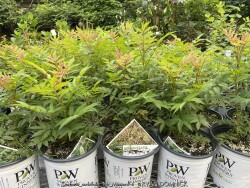
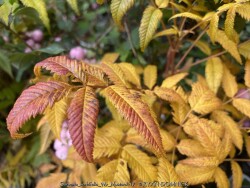
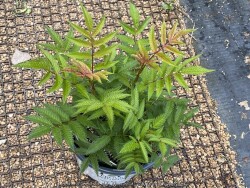
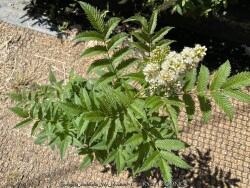
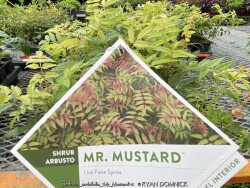
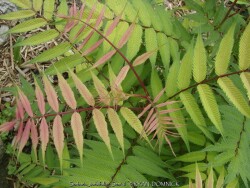

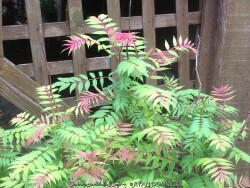
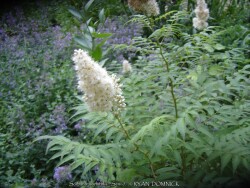
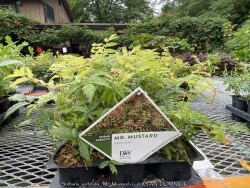
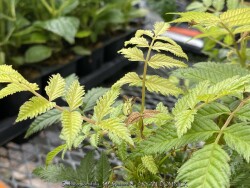
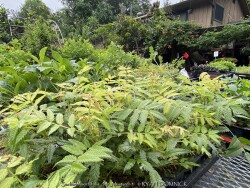
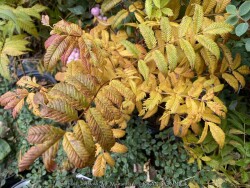
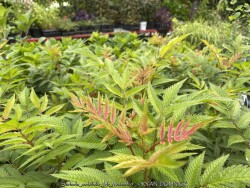
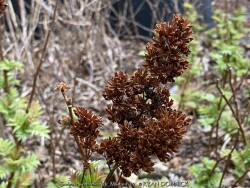
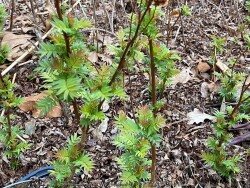


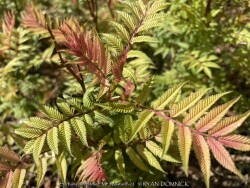
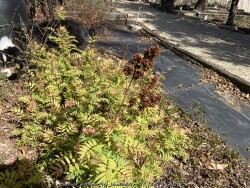
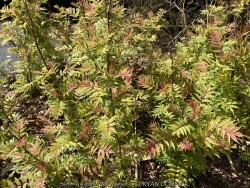
Plant Min Zone: 2a
Plant Max Zone: 7b
Sunlight: All Day Full Sun, Full Sun, Part Sun
Water / Rainfall: Low, Average
Soil Quality: Poor, Average, Rich
Bloom Season: Summer
Flower Color: White
Berry / Fruit Color: Insignificant
Spring Foliage Color: Pink, Yellowish Green
Summer Foliage Color: Green
Fall Foliage Color: Bronze, Gold, Red
Evergreen Foliage: No
Winter Interest: Some
Scented Flowers: Yes
Drought Tolerance: Medium
Wet-Feet Tolerance: Medium
Humidity Tolerance: Medium
Wind Tolerance: High
Poor Soil Tolerance: Clay Soils, Rocky Soils, Sandy Soils, Alkaline Soils (high PH), Acidic Soil (low PH)
Height: 3' - 5'
Width: 4' - 6'
Growth Rate: Medium, Fast
Service Life: Very Long: 10-20 years
Maintenance Need: Low
Spreading Potential: Medium
Yearly Trimming Tips: Trim Shrub to Desired Size After Bloom in Late Spring or Summer: Blooms on Old Wood.
Plant Grouping Size: Small Grouping of 3-5, Medium Grouping of 5-10, Mass Planting of 10 or more
Best Side of House: South Exposure, West Exposure, East Exposure
Extreme Planting Locations: Survives Severe Drought, Tolerates Extreme Heat, Resistant to Rabbits
Ornamental Features: Emerges Early in Spring, Multiple Seasons of Interest, Fine Texture, Exceptional / Colorful Foliage
Special Landscape Uses: Hedge Row
Possible Pest Problems: None
Plant Limitations: Aggressive Rhizomes / Runners
Shippable in 2026: YES
***Shrub descriptions available with future update!*** Sorbaria sorbifolia 'Mr. Mustard' is also known as Mr. Mustard Ural False Spirea >>>>>>>>>>>>Fabulously funky! Mr. Mustard boasts extraordinarily colorful foliage - yellow, orange, red, pink, and lime green meld together in springtime to make a truly memorable show. By summertime, the foliage mellows to a vibrant Kelly green and complements the fabulous creamy white flowers. These large, astilbe-like blooms attract butterflies and pollinators and its suckering habit lends a naturalized look to any garden. With some annual pruning, it easily keeps its mounded habit, suiting it perfectly for mixed beds. >>>>>>All Proven Winners® plants are legally propagated, healthy and vigorous, true to name, and tagged with color pictures and growing information. >>>>>>>>Ultra cold-hardy plants from northern climates normally dislike our long hot humid summers; although we are on the Southern edge of this plants adaptability, it still survives reasonably well here. Look for a cold microclimate planting location such as East or North exposure.>>>>>